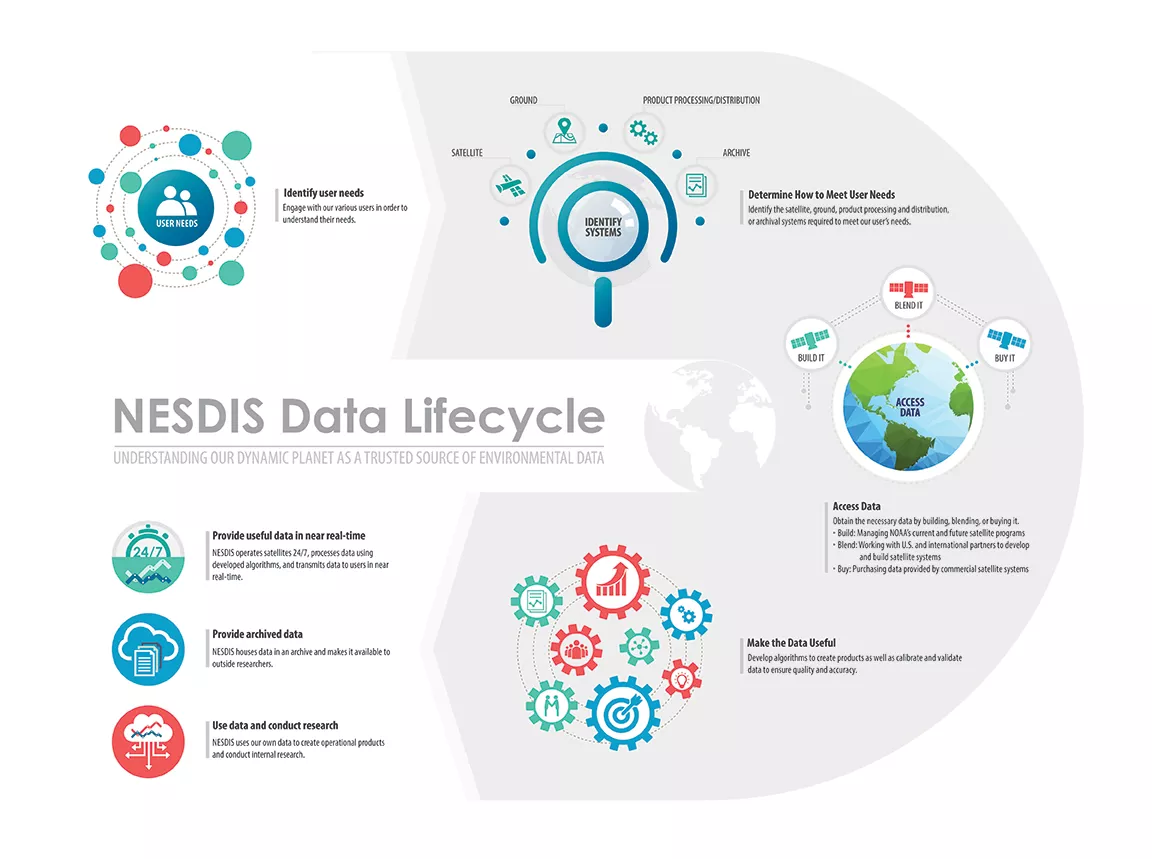
NESDIS Data Lifecycle Infographic
Understanding Our Dynamic Planet as a Trusted Source of Environmental Data
Identify User Needs
Engage with our various users in order to understand their needs.
Determine How to Meet User Needs
Identify the satellite, ground, product processing and distribution, or archival systems required to meet our user's needs.
Access Data
Obtain the necessary data by building, blending, or buying it.
Build: Managing NOAA's current and future satellite programs
Blend: Working with U.S. and international partners to develop and build satellite systems
Buy: Purchasing data provided by commercial satellite systems
Make the Data Useful
Develop algorithms to create products as well as calibrate and validate data to ensure quality and accuracy.
Provide Useful Data in Near Real-Time
NESDIS operates satellites 24/7, processes data using developed algorithms, and transmits data to users in near real-time.
Provide Archived Data
NESDIS houses data in an archive and makes it available to outside researchers.
Use Data and Conduct Research
NESDIS uses our own data to create operational products and conduct internal research.
